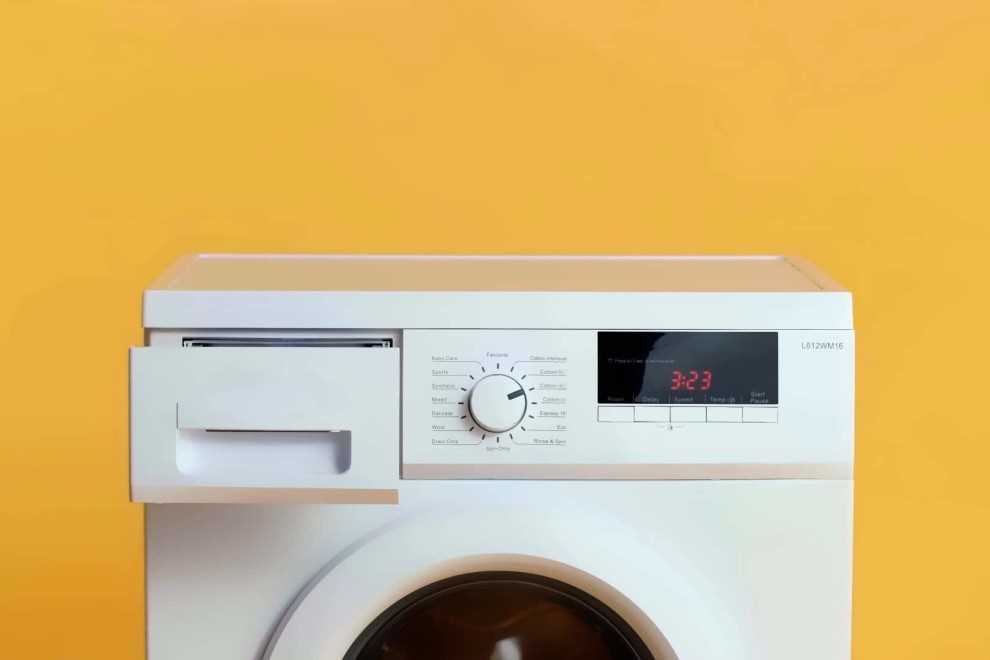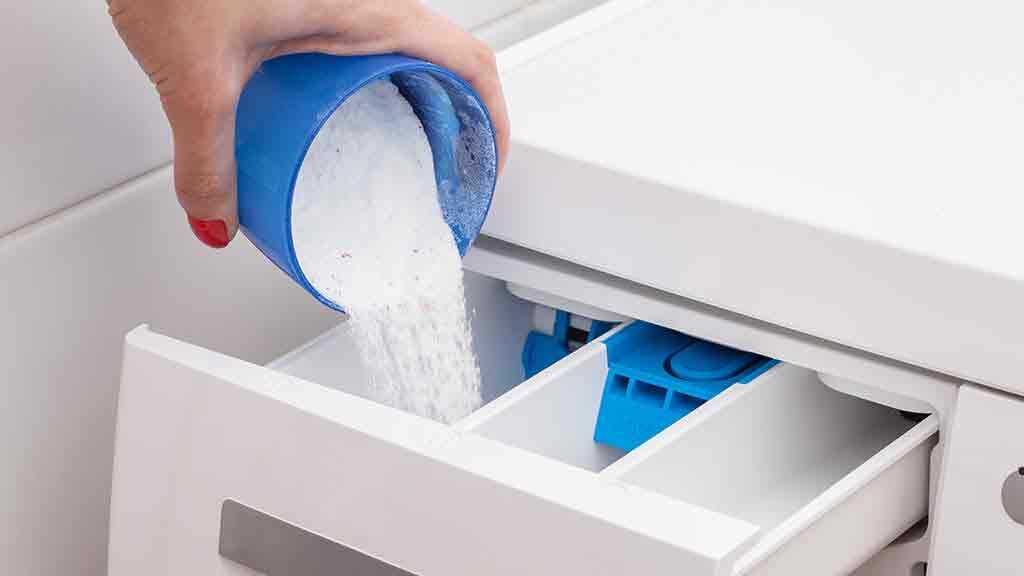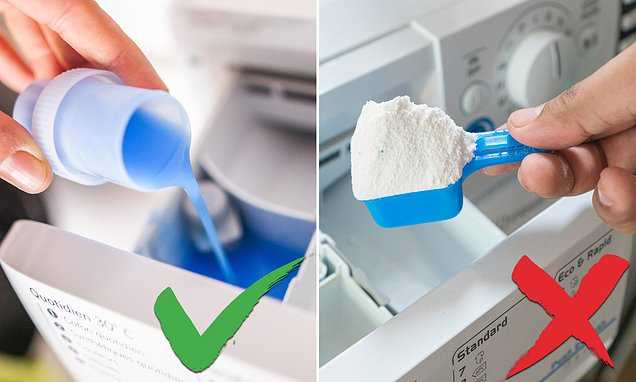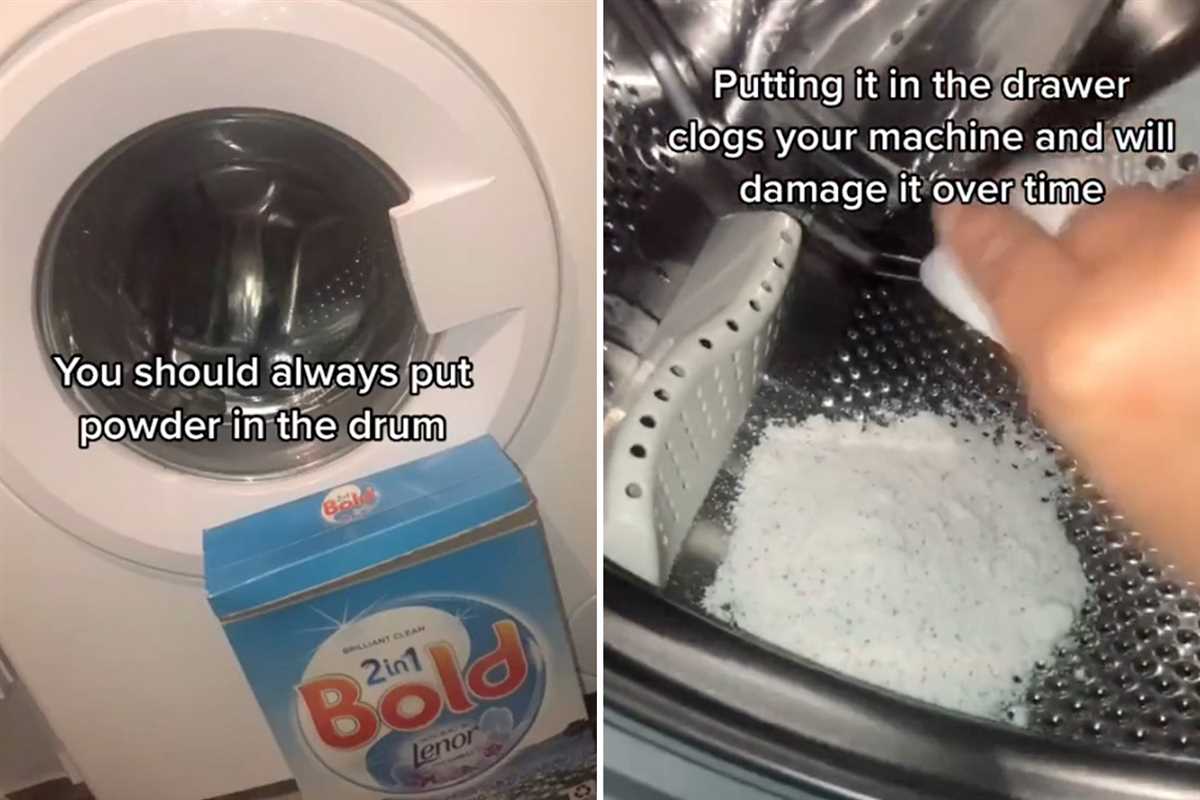




When it comes to doing laundry, knowing where to put your washing powder or laundry detergent can make all the difference in achieving clean and fresh clothes. With so many options available on the market, it can be confusing to know which compartment or area of your washing machine is the right one to use.
To ensure that your clothes are effectively cleaned, it’s important to understand the different types of washing machines and their specific detergent requirements. Whether you have a top-loading or front-loading machine, each has its own recommended placement for laundry detergents.
In a top-loading washing machine:
For top-loading machines, the general rule of thumb is to add your washing powder or laundry detergent directly into the drum, on top of the clothes. This allows the detergent to mix with the water and reach all areas of the clothing, ensuring a thorough clean.
In a front-loading washing machine:
For front-loading machines, it’s best to add your washing powder or laundry detergent into the designated detergent drawer. This drawer is typically located at the front of the machine and has compartments labeled specifically for pre-wash, main wash, and fabric softener. Follow the instructions on your detergent packaging to determine which compartment to use.
Top RatedAriel Professional Laundry Powder 5.5kgDeep clean for brilliant white resultsThis powerful detergent delivers intense cleaning performance, ensuring deep-set stains are removed while restoring whiteness. It's ideal for both domestic and commercial laundry needs, providing a long-lasting fresh scent.
No matter what type of washing machine you have, it’s important to use the correct amount of detergent for your load size. Overloading the machine with too much detergent can lead to clothes that are not fully rinsed and may even cause damage to the machine itself.
By following these simple guidelines and understanding the specific requirements of your machine, you can ensure that your clothes come out looking and smelling fresh every time you do laundry.
Understanding Washing Machines
Washing machines are essential household appliances that help us keep our clothes clean and fresh. They come in various types, sizes, and models, but all operate on the same basic principles. Understanding how washing machines work can help you optimize their performance and make the most out of your laundry routine.
Types of Washing Machines
There are two main types of washing machines: top-loading and front-loading. Top-loading machines have a lid on the top where you load your clothes, while front-loading machines have a door on the front.
Top-loading machines are generally more traditional and have a shorter wash cycle. They are also easier to load and unload, as you don’t need to bend over to reach the clothes. Front-loading machines, on the other hand, are known for their energy efficiency and larger capacities. They use less water and are gentler on clothes due to the tumbling action.
Basic Operation
Regardless of the type, all washing machines work in a similar way. The main components of a washing machine include:
- Agitator or Impeller: This is the mechanism responsible for moving and agitating the clothes during the wash cycle, helping to loosen dirt and stains.
- Drum: The drum is where you place the clothes. It rotates during the wash and rinse cycles, ensuring the detergent and water reach all areas of the fabric.
- Detergent Dispenser: Most washing machines have a detergent dispenser where you can add the laundry detergent or washing powder. Some machines also have separate compartments for fabric softener and pre-wash detergent.
- Water Inlet: This is where the water enters the machine. The water temperature, level, and pressure are controlled by the washing machine.
- Control Panel: The control panel allows you to select the wash cycle, water temperature, and other settings depending on your laundry needs.
Optimizing Performance
To optimize the performance of your washing machine and ensure clean clothes, consider the following tips:
- Follow the manufacturer’s instructions on loading capacity and detergent dosage.
- Choose the appropriate wash cycle based on the fabric type and level of dirtiness.
- Sort your laundry by color and fabric type to prevent color bleeding and damage.
- Use the correct water temperature for your clothes, as indicated on the garment labels.
- Regularly clean the detergent dispenser and the drum to prevent buildup of residue and odors.
- Don’t overload the machine, as it can affect the cleaning efficiency and strain the motor.
Conclusion

Understanding washing machines is essential for efficient and effective laundry care. By knowing the different types of machines, their basic operation, and how to optimize their performance, you can make the most out of your washing machine and keep your clothes looking their best.
How to Load Your Washing Machine

Properly loading your washing machine is essential for getting your clothes clean and avoiding damage to the machine. Follow these steps to load your washing machine correctly:
- Sort your laundry: Separate your clothes by color, fabric type, and level of dirtiness. This will help ensure that each load gets clean and prevent colors from bleeding onto each other.
- Check the machine’s instructions: Different washing machines have different capacity limits and loading instructions. Refer to the manufacturer’s instructions for the specific details regarding your machine.
- Do not overload: Avoid overloading the washing machine, as it can reduce cleaning efficiency and put extra strain on the machine’s motor. Leave enough space for the clothes to move and agitate during the wash cycle.
- Distribute the weight evenly: Place the clothes evenly around the drum, distributing the weight as much as possible. This will prevent the machine from becoming unbalanced and potentially damaging the internal components.
- Close zippers and fasten buttons: Ensure that all zippers are closed, buttons are fastened, and any strings or straps are tied before loading them into the machine. This will prevent them from getting tangled or causing damage to other clothes or the machine.
- Place delicate items in a mesh bag: Delicate items, such as lingerie or hosiery, should be placed in a mesh laundry bag to protect them during the wash cycle.
- Add detergent: Measure the appropriate amount of laundry detergent or washing powder according to the instructions on the packaging. Use a measuring cup or dispenser for accuracy.
- Close the machine: Close the washing machine door or lid firmly before starting the wash cycle. This will prevent water from leaking out during the wash.
- Select the appropriate cycle: Choose the appropriate washing cycle based on the type of garments and their degree of dirtiness. The machine’s control panel will have options to select the desired cycle.
- Start the machine: Press the start button or turn the machine on, depending on the specific model. The washing machine will begin the selected cycle and clean your clothes accordingly.
Following these steps will help you load your washing machine properly and ensure efficient cleaning results. Always refer to the manufacturer’s instructions for specific guidelines related to your machine.
Choosing the Right Washing Detergent

When it comes to choosing the right washing detergent for your laundry, there are a few factors to consider. The type of detergent you choose can have an impact on the cleanliness and longevity of your clothes, as well as the environment. Here are some key factors to keep in mind:
1. Dirt and Stain Level
The first factor to consider is the level of dirt and stains on your clothes. If you have heavily soiled items or tough stains, you may want to choose a detergent specifically designed for stain removal. Look for detergents that mention “stain-fighting” or “heavy-duty” on the packaging.
2. Fabric Type
Different fabrics require different care, so it’s important to choose a detergent that is suitable for the fabric you are washing. Delicate fabrics like silk or wool may require a gentle or specialized detergent, while everyday fabrics like cotton or polyester can generally be washed with a standard detergent.
3. Allergies and Sensitivities
If you or your family members have allergies or sensitivities to certain ingredients, it’s important to choose a detergent that is hypoallergenic and free from harsh chemicals or fragrances. Look for detergents labeled as “sensitive” or “hypoallergenic” to minimize the risk of irritation.
4. Eco-Friendliness
For those who want to minimize their environmental impact, choosing an eco-friendly detergent is key. Look for detergents that are biodegradable, phosphate-free, and made from sustainably sourced ingredients. Additionally, consider using concentrated detergents or opting for refillable packaging to reduce waste.
5. Washing Machine Compatibility
Some washing machines may require specific types of detergents. For instance, high-efficiency (HE) machines often work better with low-sudsing detergents. Check your washing machine’s manual or consult the manufacturer’s guidelines to ensure you choose a detergent that is compatible.
6. Budget

Lastly, consider your budget when choosing a detergent. While some specialty detergents may be more expensive, they may also provide better results for specific needs. However, if you’re on a tight budget, there are plenty of affordable options available that still offer good cleaning power.
By considering these factors, you can choose the right washing detergent that will effectively clean your clothes while meeting your specific needs and preferences.
Where to Put Washing Powder in Top-Loading Machines
If you have a top-loading washing machine, you may be wondering where to put your washing powder. The location can vary depending on the specific model of your machine, but here are some general guidelines to follow:
- Check the detergent tray: Most top-loading machines have a detergent tray located at the top of the machine. This tray is usually divided into compartments labeled “Main Wash,” “Pre-Wash,” and “Fabric Softener.” The main wash compartment is where you should put your washing powder.
- Measure the correct amount: It’s important to use the correct amount of washing powder for your load size. Check the instructions on the packaging for guidance on how much to use. Using too much detergent can lead to excessive sudsing and poor rinsing, while using too little may result in less effective cleaning.
- Avoid overloading the tray: Make sure not to overfill the detergent tray. If the tray is too full, it may not properly dispense the washing powder during the wash cycle. Follow the manufacturer’s recommendations for the maximum fill level.
It’s worth noting that some top-loading machines have a built-in dispenser for laundry detergent pods or tablets. In this case, simply place the pod or tablet in the designated compartment, following the manufacturer’s instructions.
Remember to always follow the manufacturer’s guidelines for your specific washing machine, as the placement of the detergent tray may vary. By properly placing your washing powder, you can ensure clean and fresh-smelling laundry with every wash.
Where to Put Laundry Detergent in Front-Loading Machines
If you have a front-loading washing machine, it’s important to know where to put your laundry detergent to ensure it gets properly distributed during the wash cycle. Here’s a step-by-step guide to help you:
- Open the detergent dispenser drawer located on the front of your washing machine.
- You will usually find different compartments in the dispenser drawer, labeled with symbols such as I, II, and *.
- For the main wash cycle, you should pour the recommended amount of detergent into the largest compartment, usually labeled with the number II or the word “Main Wash”. This is where you’ll put the detergent for your regular laundry loads.
- Some front-loading machines also have a prewash compartment, labeled with the symbol I or the word “Prewash”. If you have heavily soiled or stained garments, you can add a small amount of detergent to this compartment.
- In addition to the main wash and prewash compartments, there might be other compartments in the dispenser drawer for fabric softener or bleach. Consult your washing machine’s manual to learn how to use these compartments.
- Once you’ve poured the detergent into the appropriate compartments, close the drawer securely.
- Now you’re ready to start the wash cycle. Select the desired wash settings, such as temperature and cycle length, on your washing machine’s control panel.
- Load your laundry into the washing machine and press the start button to begin the wash cycle. The machine will automatically dispense the detergent from the appropriate compartment at the right time during the cycle.
- After the wash cycle is complete, open the washing machine door and remove your clean laundry.
- Remember to clean the detergent dispenser drawer regularly to prevent buildup and ensure proper functioning of your washing machine.
By following these steps, you can ensure that your laundry detergent is being placed in the correct compartments of your front-loading washing machine, helping to achieve clean and fresh-smelling clothes with every wash.
FAQ
Where should I put the washing powder in my washing machine?
The washing powder should be placed in the detergent drawer of your washing machine. There are usually compartments labeled with numbers or symbols indicating where to put the detergent, fabric softener, and pre-wash products.
Can I put the washing powder directly into the drum?
No, it is not recommended to put the washing powder directly into the drum of the washing machine. The detergent drawer is designed to dispense the detergent at the appropriate time during the wash cycle, ensuring effective cleaning and preventing any potential damage to the machine.
What happens if I put too much washing powder in the detergent drawer?
If you put too much washing powder in the detergent drawer, it can result in excessive foam and poor rinsing. This can leave residue on your clothes, cause them to feel stiff, and even cause skin irritation. It is important to follow the recommended dosage instructions provided by the detergent manufacturer.
Can I mix different types of laundry detergent?
It is not recommended to mix different types of laundry detergent unless specified by the manufacturer. Different detergents can have different formulations and ingredients, which may not work well together and can affect the cleaning performance of your laundry. It is best to stick to one type of detergent or follow the manufacturer’s instructions if mixing is allowed.
What should I do if my washing machine doesn’t have a detergent drawer?
If your washing machine doesn’t have a detergent drawer, you can use a laundry detergent ball or pod that can be placed directly in the drum. Alternatively, you can dissolve the washing powder in water before adding it to the machine. Make sure to follow the instructions on the detergent packaging for the correct dosage and method of use.












